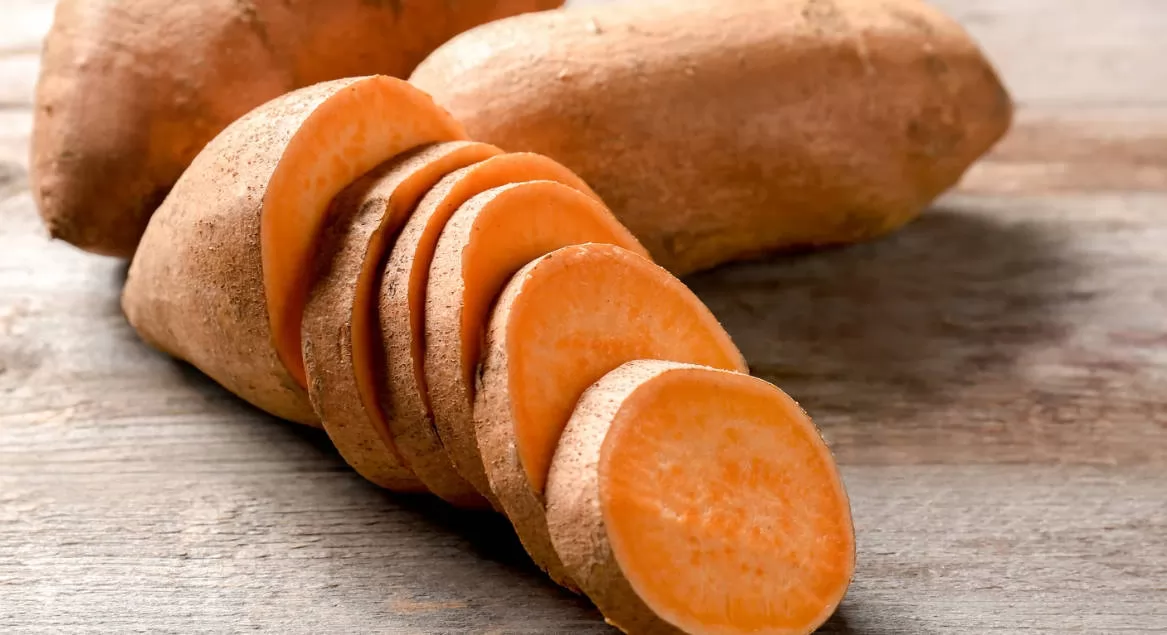Growing sweet potatoes in Colorado offers a rewarding challenge for gardeners. These nutrient-packed, flavorful root vegetables thrive with the right care, delivering a bountiful harvest and a sense of accomplishment. This guide provides actionable tips to help you cultivate sweet potatoes successfully in Colorado’s unique climate.
Sweet potatoes and yams are often confused, but they differ significantly. Sweet potatoes feature smooth skin in colors like white, yellow, or orange, with moist, vibrant flesh ranging from light yellow to deep orange. Yams, by contrast, have rough, bark-like skin (dark brown to black) and drier flesh in white, purple, or reddish hues. Flavor-wise, sweet potatoes are naturally sweet and versatile, while yams offer an earthy taste, popular in Caribbean cuisine.
Sweet potatoes are a nutritional powerhouse. A medium-sized sweet potato provides ample vitamin A, vitamin C, fiber, antioxidants, and minerals like copper and manganese—making them a healthy addition to any diet.
From roasted sweet potatoes to mashed desserts or crispy fries, this vegetable shines in countless dishes, appealing to both home cooks and restaurant menus.
Selecting varieties suited to Colorado’s climate is key to success. Here are three top options:
The ideal time for planting sweet potatoes in Colorado is late spring to early summer, around early June. Cool early-season temperatures promote growth, while warmer summer days speed up ripening before fall frost arrives.
Choose a location with full sun (at least 8 hours daily) and well-drained soil. Sweet potatoes need abundant light and good drainage to produce high-quality tubers.
Test your soil’s pH—sweet potatoes prefer a slightly acidic range of 5.5–6.5. Adjust alkaline soil with sulfur or phosphorus. For heavy, clay-like soil, mix in sand or organic matter like compost to improve drainage and nutrient content.

Sweet potatoes grow from slips—small, rooted shoots sprouted from mature tubers. Purchase slips from reputable vendors, checking reviews for quality assurance. Inspect slips for signs of disease or damage before planting.
To start slips indoors, place a sweet potato in a shallow container of soil, keep it warm, and water regularly (keeping soil moist, not soggy). In about three weeks, 2–3-inch shoots will emerge. Cut these slips and replant them in pots until they root, ready for outdoor planting.
Prepare loose, amended soil and plant slips 4–6 inches deep, spacing them 12–20 inches apart (depending on variety). Water thoroughly and add mulch or straw to retain moisture and suppress weeds.
Sweet potatoes require consistent moisture—water once or twice weekly, or more in dry conditions. Check soil dampness with your finger; water if it feels dry an inch down.
Weeds compete for resources, so remove them by hand or use mulch to create a barrier. Mulching also conserves water and keeps soil cool.
Amend soil with compost or peat moss before planting. Two to three weeks after planting, apply a balanced fertilizer (e.g., 10-10-10) rich in nitrogen and phosphorus. Rotate crops annually with plants like cucumbers or squash to maintain soil health.
Colorado gardens may face pests like beetles, aphids, thrips, mites, and leafhoppers, which damage foliage and roots, stunting growth and reducing yields.
Fungal issues like black rot, gray mold, and powdery mildew, along with bacterial leaf spots, can affect sweet potatoes in Colorado. These cause yellowing, lesions, or discoloration.
Use organic methods like companion planting, crop rotation, and beneficial insects (e.g., ladybugs) to deter pests. Ensure proper spacing, apply compost, and remove diseased plant material. If needed, use chemical controls carefully, following label instructions.
Sweet potato vines can grow up to 10 feet, covering the ground and absorbing nutrients for tuber development.
Create mounds or ridges to train vines, improving air circulation and reducing weeds and disease. Pinch back vines exceeding one foot to focus energy on tubers.
Pinching conserves water and nutrients, prevents disease, and boosts tuber size and quality for a higher yield.
Harvest sweet potatoes in Colorado from September to October, when foliage yellows and dies back. Check a test plant—tubers should be plump, firm, and brightly colored.
Use a garden fork to loosen soil, avoiding tuber damage. Pull plants by their stalks, brush off dirt, and trim away diseased areas for composting.
Cure tubers for two weeks in a warm, ventilated space (e.g., a garage) to enhance flavor and form a protective skin. Store at 55°F with 85% humidity in a mesh bag, away from sunlight, checking regularly for decay.
Extend the growing season with raised beds or hoop houses. Raised beds retain warmth, while hoop houses create a controlled, warmer environment.
Track forecasts to protect plants from frost or cold snaps. Use thermal blankets or move pots indoors if extreme weather threatens.
Growing sweet potatoes in Colorado is entirely achievable with the right preparation and care. From selecting hardy varieties to mastering planting and maintenance, this guide equips you to enjoy a thriving harvest. Start your sweet potato journey today and savor the fruits of your labor! Contact us now!











We use cookies to make the website work, to provide advanced features, social media and traffic analysis, and we use analytics and third-party advertising cookies. If you choose to click "Deny All", you will retain the default setting of not allowing the use of cookies or other tracking tools other than technical tools.



